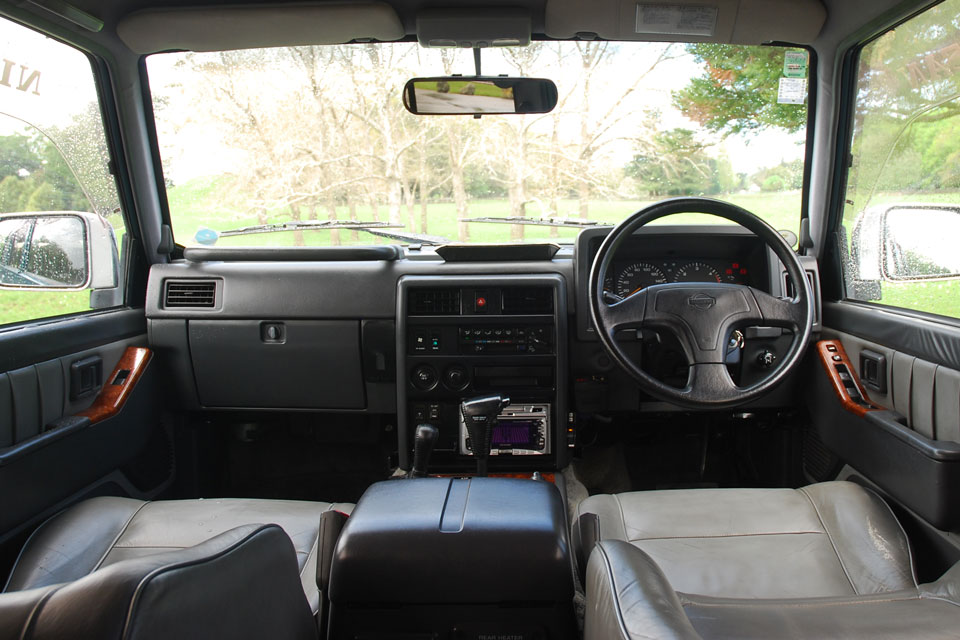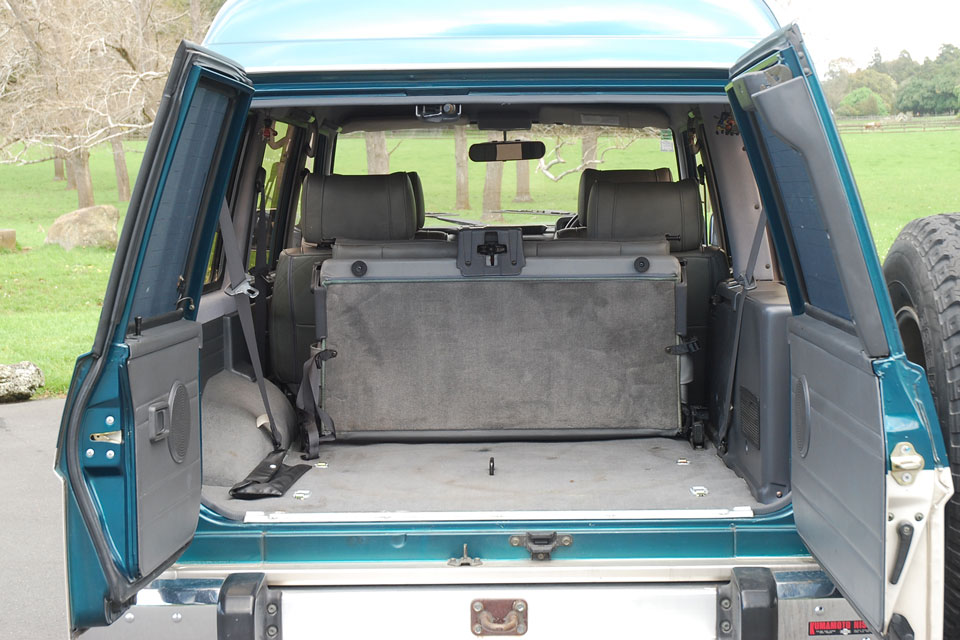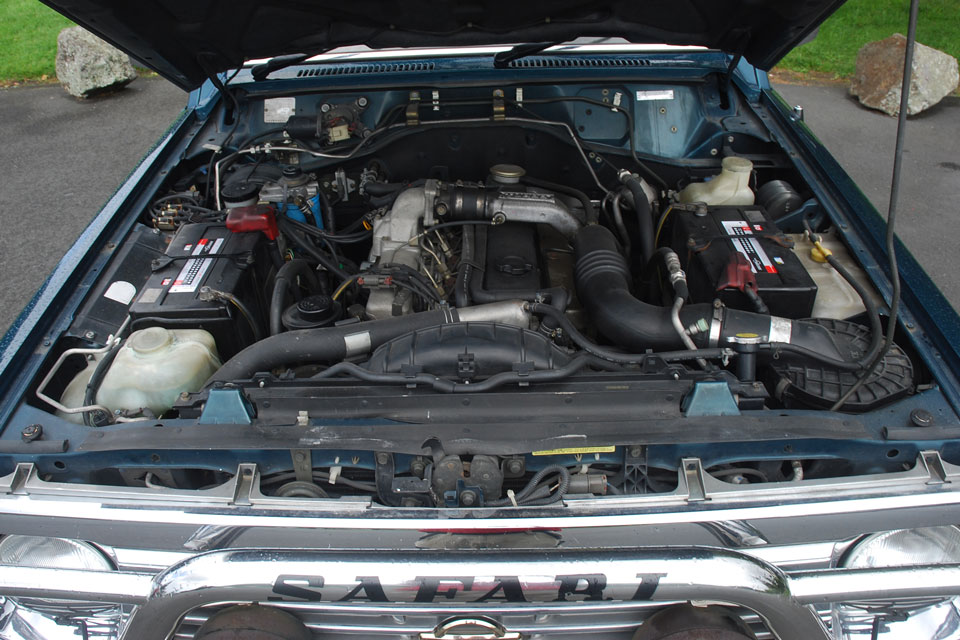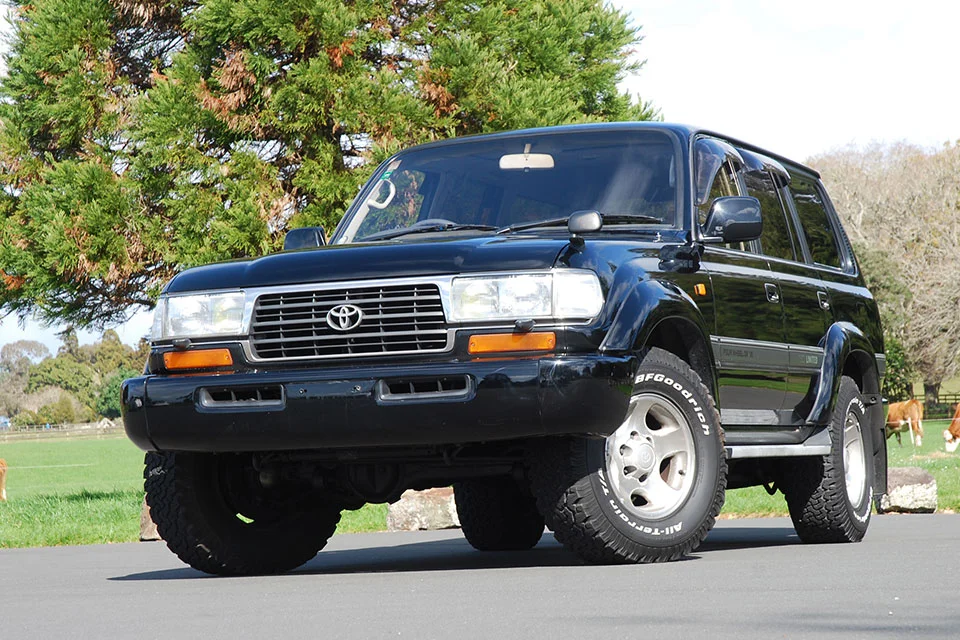Nissan Safari 1987-1997 used car review
The Nissan Safari is a tough, durable and work-ready large SUV.

The Nissan Safari is a tough, durable and work-ready large SUV. Its size and the way it drives make it better for the country than the city.
Based on a heavy-duty chassis, the Nissan Safari is a large SUV initially designed for hard work off-road. Models range from basic to highly specified luxury models like our Kingroad review vehicle. Three-door, five-door, five-door high-roof and truck versions are available. The New Zealand-new Patrol is very similar, though it’s available with a wider range of engines.
Inside and out
The Safari’s design is simple and best described as two boxes bolted together. The front features round headlights and a large metal grille. The sides have two-tone body cladding and side steps. The rear door is split in two vertically - the smaller section opens first for easy access and the more extensive side has the spare tyre bolted to it. Our review vehicle has a high roof for additional space inside.
The interior follows a similar theme, with the dash and instrument cluster square and block-like. The gauges are huge and easy to read. In the centre are the controls for the climate control air-conditioning, differential locks and an aftermarket CD player stereo which will require a band expander to receive local stations. A large grab handle is fitted to the dash for the front seat passenger. The door trims feature wood and soft, pleated leather.
The second row has enough width for three adults and the third row is designed for two. Unlike most SUVs, the third row can handle adults. Legroom for second-row passengers is disappointing and feels less than the space offered to those in the third row. Rear passengers get their own heater controls and the third row gets a set of air vents. A handy cooler box is fitted into the side of the seat adjacent to this row.
With all three rows in place, the boot space is not great - only enough for three small cases. The third row folds forward, though not flat, creating enough space for six or more large cases. Fold down both rear rows and, in combination with the high roof, a vast volume of space becomes available - though the non-flat seats and roof air vents could get in the way of large items.
On the road
The smallest engine available in the Safari is a 2.8-litre four-cylinder turbocharged diesel in special “Spirit” models. A 4.2-litre six-cylinder petrol engine is available, though very rare in Japanese models. It is most commonly fitted to a double-cab ute version used only as a fire engine - easy to spot because they are painted red. The most common engine is the 4.2-litre six-cylinder diesel, in normal and turbocharged versions.
Five-speed manual and four-speed automatic transmissions are available. Our review vehicle is fitted with the latter, which produces 107kW and 330Nm. The Safari is not quick and moves such as overtaking need to be made cautiously. It feels very strong, however, and no amount of load is likely to impact its performance. It is a loud engine, both at idle and underway.
The steering is light and vague, and the ride soft and bouncy. There is a significant amount of body roll, although if the vehicle’s not pushed too hard the grip is decent. Off the road the Safari is excellent - with a limited slip rear differential, locking centre differential and low-range transmission, it can tackle tricky conditions even in standard form. A hand-throttle is fitted next to the steering wheel to raise engine revs for off-road crawling and also for using aftermarket power take-off equipment.
A huge range of off-road accessories is available for the Patrol, such as lift kits, front locking differentials, winches and underbody protection. A high seat position means visibility from the driver’s seat is reasonable, but the overall size of the car makes parking and squeezing into small gaps around town slightly daunting. We recommend fitting parking sensors front and rear, and a reversing camera. If you fit a camera yourself it will cost from $50, or a professional will do it from $200.
The Safari’s tow rating is surprisingly low for its size. It can handle 750kg unbraked (a medium-sized garden trailer) and 2,500kg braked (a medium to large trailer boat).
Safety
The Safari’s size and solid build are its only safety features; even airbags or anti-lock brakes are not fitted. RightCar does not list a safety rating for the model. However, the New Zealand-new Patrol carries a three-star Used Car Safety Rating based on real-world crash test results.
The rear seat features a lap-belt in the centre position, which offers less protection than the shoulder-type. There are no ISOFIX child seat mounts. Two child seat anchor points are available on the rear floor.
Reliability
The Safari is considered well-built and reliable, with age and mileage becoming its biggest issues. The 4.2-litre diesel models use a timing gear system, meaning there’s no need for a cam belt or timing chain.
The engine and drivetrain have few common issues. Fluid leaks can occur, although these are usually fixed by replacing the seals when the vehicle is serviced.
Early models can experience a shimmy from the front-end suspension. Four-wheel drive specialists will usually be able to eliminate that with a wheel alignment and adjustment of the front steering knuckles.
The Safari is often used in rough off-road conditions, so get under the vehicle to look for damage to the chassis and underbody. If the car has been used for towing boats, look for corrosion in the rear of the vehicle.
Cost of ownership
Nissan recommends servicing the Safari every six months or 10,000km, with a basic service starting from $280. Expect to spend more when transmission and differential services are required.
RightCar does not list running costs for this generation Safari. Reports indicate 12 litres per 100km is about the best you can expect. The 95-litre fuel tank will cost $137.75 to fill at $1.45 per litre of diesel and should let you travel 750km before the fuel light comes on.
A vehicle licence for the Safari costs $183.31 a year, with the car in the second most expensive ACC levy group.
Trade Me Insurance estimates insurance for a Safari valued at $11,160 will cost $48.83* per month, the same as a Nissan Pathfinder of the same year. That’s $10 cheaper than a Toyota Landcruiser.
Buyers’ guide
Nissan Safaris are listed on Trade Me from $5,500 to $26,000. The most expensive vehicles are either specially modified off-road vehicles or low-mileage, high specification freshly imported cars from Japan. As the model is more than 21 years old, they are now legal to import again. Those vehicles have been better looked after and suffer less wear and tear than the vehicles already on New Zealand roads.
Variants
- DX - Powered by a non-turbocharged 4.2-litre diesel engine. Features steel wheels, manual air-conditioning, and fabric seats.
- AD - Available with the option of a turbocharged 4.2-litre engine and high roof. Adds alloy wheels and a rear seat heater.
- Spirit - Powered by a 2.8-litre litre turbocharged diesel engine or 4.2-litre six-cylinder diesel. Adds premium interior trim and two-tone exterior body cladding.
- Granroad - Over AD adds side steps, two-tone exterior body cladding, chrome bumpers, premium interior trim and sunroof.
- Kingroad - Adds third-row seats, leather interior, climate control air-conditioning, leather shift knobs, wood trim and boot fridge.
Timeline
- 1987 Launched in Japan
- 1993 The 4.2-litre engine weight reduced for improved performance
- 1995 Given minor cosmetic update including new grille
- 1997 Replaced by new model
Details
1995 Nissan Safari Kingsroad
$24,000 to $25,000 for models which have travelled 70,000 to 120,000km
4.2-litre four-cylinder turbocharged, 107kW/330Nm (claimed)
Four-speed automatic, four-wheel drive
Three-star Used Car Safety Rating (NZ model)
10,000km or six months
Full size wheel
12-litres per 100km (reported)
Diesel
4845mm
1930mm
1815mm - varies by model
750kg (unbraked), 2500kg (braked)
12.5m
This review covers the Nissan Safari 1987, 1988,1989, 1990, 1991, 1992, 1993, 1994, 1995, 1996 and 1997.
Review vehicle supplied by Unique Japan.
*Our insurance estimates are based on a 35-year-old male with no accidents in the last two years, garaging the car in Mission Bay, Auckland. The car is not used for business and will cover 10,000km to 20,000km a year. We estimate with no option add-ons and $500 excess. Customise your estimate at Trade Me Insurance.
Image gallery
Also consider






